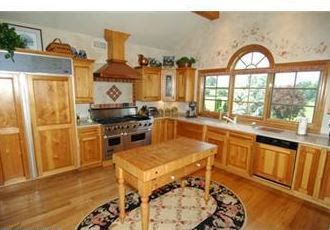Dressing Windows
 Not all windows need to be dressed. Some have such a distinct shape or design, stained glass for example, to want to cover. But these windows are few and far between. For the most part, windows can look very bare without curtains, blinds or shutters and when the nights are dark, bare windows can leave a gaping black hole in the wall.
Not all windows need to be dressed. Some have such a distinct shape or design, stained glass for example, to want to cover. But these windows are few and far between. For the most part, windows can look very bare without curtains, blinds or shutters and when the nights are dark, bare windows can leave a gaping black hole in the wall.
Needs
There are plenty of solutions for windows so it’s important to understand what you need specifically. Do you want to block out the light completely? To keep the warmth in? Or do you want to diffuse or play with the light? Or to combine these roles depending on the time of year?
Diffusing Light
Voiles, sheers or nets are a good solution for diffusing harsh light or creating areas of dappled light. Shutters and wooden blinds can also create gorgeous effects with light – as the sun shifts round the room.
Blackout
Rooms where you sleep will require complete blackout and appropriate linings whereas other rooms might not need as many layers. Consider how well your fabrics drape and the effect the thickness of the linings will have on your choice, as blackout lining in particular is thick and frequently stiff.
Fabric Weight
Double poles now mean it’s much easier to have both voiles and curtains at the window and this is a great solution for flexibility throughout the day and the year. It’s worth paying attention to the combined weight of the fabrics though as the poles will require considerable support for heavier fabrics (ones that might also be suitable for upholstery for example).
Acoustics
An abundance of fabrics at the windows will, however, help with the acoustics of a room. If the room has wooden floors and lots of glass or mirrors then the ability to deaden bouncing sound can be required, certainly if there are noisy children (or adults) around.
Styles
Windows can be dressed with swags and tails and look like historical masterpieces or can be a simple muslin on a string. Blinds can be Roman – the general trend at the moment – or roller (be warned of fraying edges) but also far more flamboyant in the Austrian festooned style or practical and office-like with Venetian blinds.
Fabrics
Curtains add a fabulous splash of colour and texture, so your choice of fabric is key for the look and feel of the room. Wool drapes beautifully and has an inherent warmth and strength to it, silk has amazing reflective qualities but can appear quite stiff. A good cotton-linen mix is an excellent option but in fact most curtain fabrics are now composed with a mix of materials to give an all-round durable yet beautiful finish.
Coordination
Choose accessories – cushions and rugs – that will coordinate with the curtain fabric. This is a fundamental part of the room’s scheme and how these materials work together will say a lot about the room. Combine textures if you are working with neutrals or have fun with patterns if you are brave. You only need to keep a colour in common and they will tie together well.
